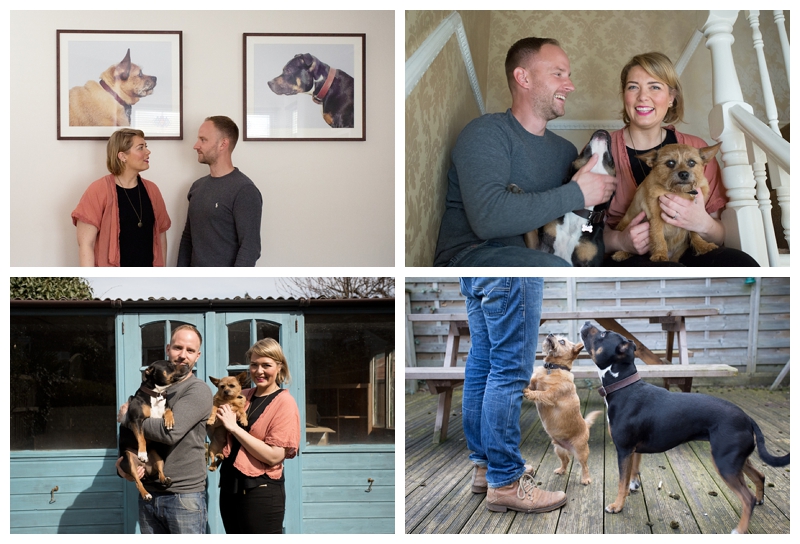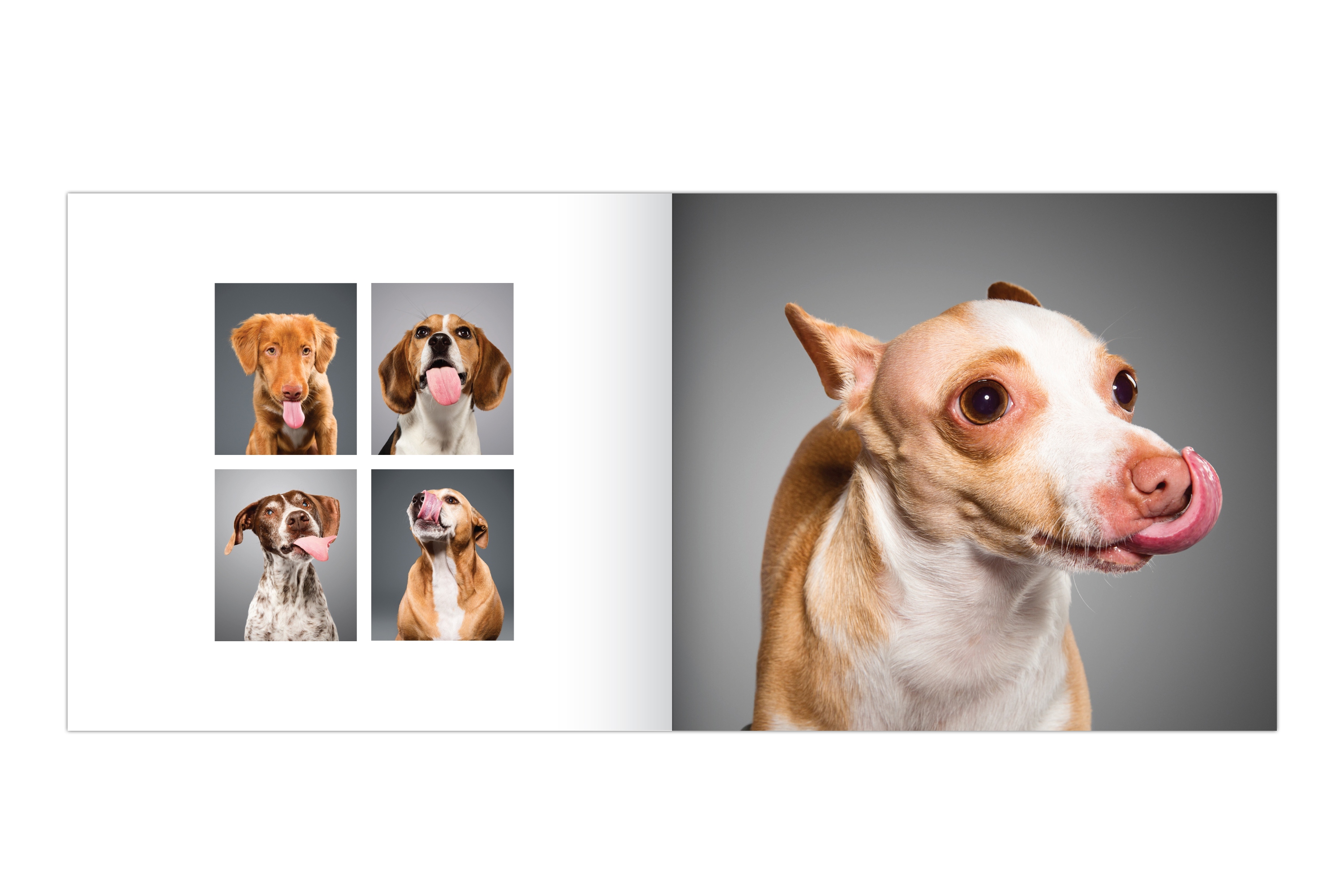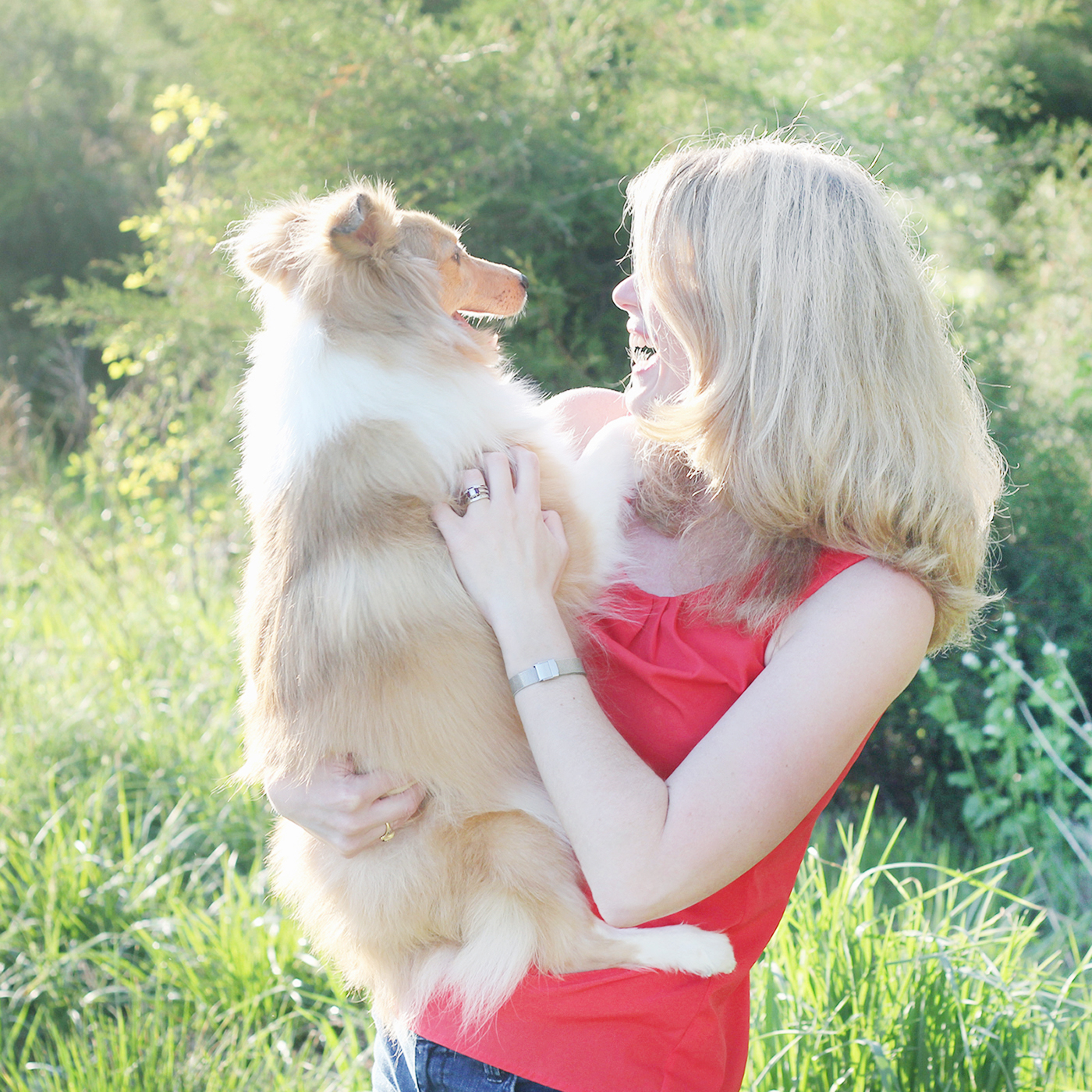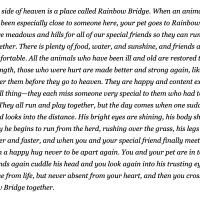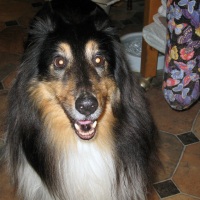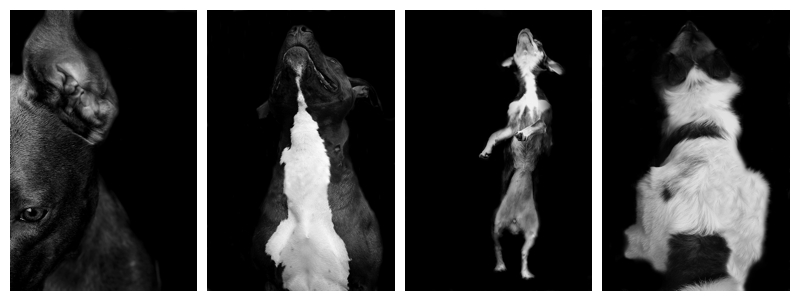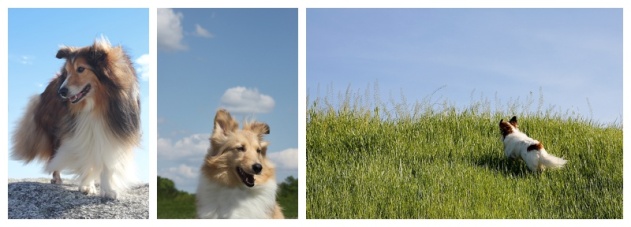Interview with Delphine Crépin, Photographer

Recently, I had the opportunity and pleasure of interviewing Delphine Crépin, a France-based photographer and film director, who recently has created a photography series, entitled, Waste, a compilation of images utilizing a collage method incorporating dogs and spaces. According to Crépin, “The idea [Waste] came to me while sorting through my photographs. Today the notion of photography as a documentary has been totally rethought. We take, we throw, and we move on to the next thing, hoping that it is better. By creating this series, I saw something of a revival of these clichés.” Crépin hopes the viewer observes an image juxtaposition, which raises the question — has the dog been left alone for a minute or has the dog been abandoned? A selection of Delphine Crépin’s work is displayed below. Her work has been shown in numerous exhibitions. Please visit Delphine Crépin website to view more of her wonderful work.
KATHERINE CARVER: What were your beginnings as a photographer and when did you realize it would become your chosen form of expression?
DELPHINE CRÉPIN: I’ve always been attracted to the camera. Being able to freeze a moment forever intrigues me and reassures me. As a child, I loved leafing through photo albums of family, giving me the ability to live these past moments. In fact, sometimes, I realize that these albums derive my memories. Most of all, the fear of forgetting pushes me to photograph the present. I started reading about the subject and I discovered the work of Jeff Wall, who really gave me the push to continue.
KATHERINE CARVER: Did you study art formally?
DELPHINE CRÉPIN: Not officially in a school; however, I personally have studied photography on my own – my house is filled with books, essays, films, documentaries, and photographs.

copyright 2016 Delphine Crepin
KATHERINE CARVER: How do you describe your style?
DELPHINE CRÉPIN: Both documentary and fiction – a quest for identity.
KATHERINE CARVER: Can you describe the time when you first realized that creating photographs was absolutely something that you had to do?
DELPHINE CRÉPIN: I first realized I wanted to create photographs during the collaboration on the InvU project, where I created a portrait series of disfigured people. At that time, photography as a medium made sense to me. Photography allowed me to convey a message and touch a large number of people from different universes.

copyright 2016 Delphine Crepin
KATHERINE CARVER: What was the impetus that inspired you to begin photographing dogs, as you have several series focusing on dogs, including your work entitled, Waste?
DELPHINE CRÉPIN: I have always loved animals, especially dogs. I started photographing dogs by chance. A few years ago, without asking, while I was preparing my studio for a shoot, my dog, Dogabert, came to the front of the camera. He sat still, in front of the camera, unwilling to move. I needed to do some light testing anyway, so I took advantage of this serendipity. I put a coat on my dog’s back and started photographing him. The lighting and the intensity in my dog’s eyes pierced me. I try, through my photographs, to give dogs a voice.
KATHERINE CARVER: How have your own dog(s)/animal(s) influenced your work?
DELPHINE CRÉPIN: Dagobert, my dog, is simply my source of inspiration. He leads me to reflect on subjects that are far from me; and he has opened the doors to another world, not so far from our own. Importantly, Dogobert has allowed me to see with a less human, unprejudiced outlook.

copyright 2016 Delphine Crepin
KATHERINE CARVER: Where did the idea derive from for your work entitled, Waste?
DELPHINE CRÉPIN: WASTE is both a recent series and a reprint of forgotten photographs. The idea came to me while sorting through my photographs. Today the notion of photography as a documentary has been totally rethought. We take, we throw, and we move on to the next thing, hoping that it is better. By creating this series, I saw something of a revival of these clichés.
KATHERINE CARVER: In your series, Waste, how did you decide to implement an image within an image approach, so to speak?
DELPHINE CRÉPIN: The collage seems interesting to me in the sense that the two subjects – the dogs and the open spaces share commonalities. In the unconscious of people, the dog is not discernable from the human and the places that surround the dog and human. In contrast, when the dog is shown waiting in front of a building, waiting in front of a shop, or waiting in the middle of natural space, illustrates the attachment of the dog to his master – wherever the dog is he waits for his master. The juxtaposition of these images and the choice of the title “WASTE” (déchet in French) seemed an important indicator of reuse.
KATHERINE CARVER: What do you hope viewers take away after viewing your work entitled, Waste?
DELPHINE CRÉPIN: Here the viewer observes an image juxtaposition; by this association, I hope that it raises the question: has the dog been deposited there for a minute or has the dog been cowardly abandoned? I try to make the viewer react in relation to the place given to the animals and the message that these images convey. The collage leads the viewer in another direction and tries to find a meaning. I hope that the viewer interprets a larger impact collectively via the collage rather than separately.

copyright 2016 Delphine Crepin
KATHERINE CARVER: Where do you show/exhibit your work?
DELPHINE CRÉPIN: My work has been exhibited in variousmuseums and galleries such as: Au Palais des Papes d’Avignon; à l’Historial de la Grande Guerre de Péronne; à la Galerie Jean-François Cazeau à Paris; au Pôle international de la Préhistoire; and à la maison de la Culture d’Amiens. My work has also appeared in various magazines and on the Internet.
KATHERINE CARVER: What does ‘being creative’ mean to you?
DELPHINE CRÉPIN: Surprising oneself and constantly challenging oneself.
KATHERINE CARVER: What is the most challenging aspect of being a photographer?
DELPHINE CRÉPIN: Succeeding in making a living.

copyright 2016 Delphine Crepin
KATHERINE CARVER: What inspires you to keep going and what keep you motivated?
DELPHINE CRÉPIN: The satisfaction of creating something that makes me believe that my job improves the daily lives of people. I like to think that art is the only thing that allows us to dream. Ultimately, photography, for me, is a part of my identity.
KATHERINE CARVER: What types of patterns, rituals, and routines do you have while making your photographs?
DELPHINE CRÉPIN: When I come home from a shoot, I cannot wait to see the results. But I refuse to look at the images that day; instead, I wait at least a day to review the images. Over time, I realized that we must let the images and ideas rest. One must let one’s mind forget and create a memory.

copyright 2016 Delphine Crepin
KATHERINE CARVER: What are you working on now?
DELPHINE CRÉPIN: I continue to work on my series at the animal shelter, to help encourage adoption. And, in parallel, I am working on a photographic inventory of community portraits. I focus on people in a group and how they differentiate themselves as an individual from the group. I focus mainly on groups of people who do not have a place in society. In the hour when individualism is the key word of our society, I focus on the people who have chosen to be part of an unusual group.
KATHERINE CARVER: What artists inspire your work?
DELPHINE CRÉPIN: Jeff Wall and Genevieve Cadieux for the moment posed, freeze-frame; Wim Wenders for the side portrait of nature; Alec Soth and August Sanders for the documentary; Diane Arbus for the portrait; William Wegman for his painting and portrait of Man Ray; and David Hockney as a painter, photographer, and complete artist.

copyright 2016 Delphine Crepin
KATHERINE CARVER: What advice do you have for aspiring artists?
DELPHINE CRÉPIN: Be yourself and persist.
KATHERINE CARVER: How can people view your work?
DELPHINE CRÉPIN: On my website; my instagram; and you can contact me via email at delphinecrepin@me.com.
All images are courtesy of Delphine Crépin.
You can read more interviews here.















































